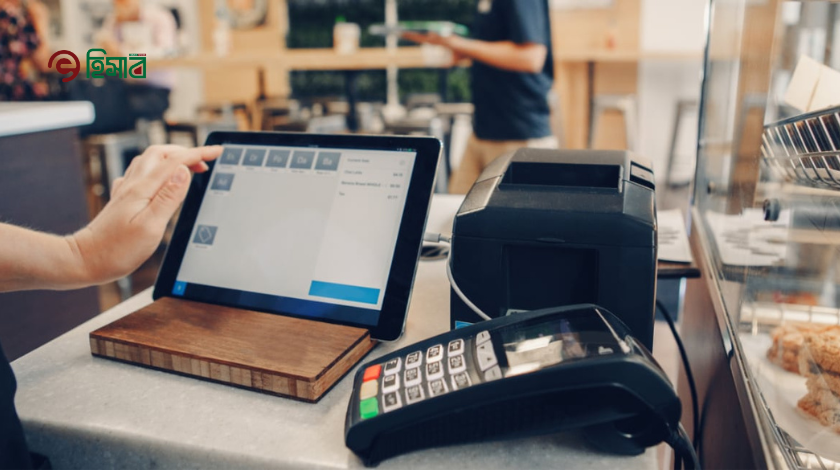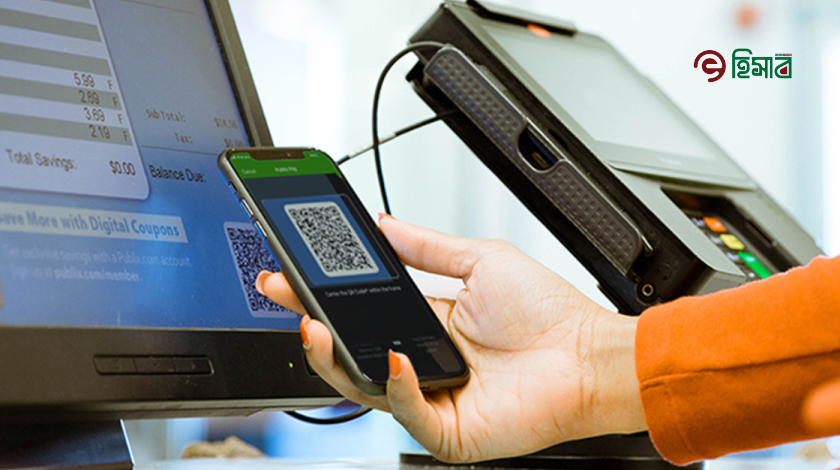In the era of digitization in the fast-paced world of commerce, Point of Sale (POS) systems play a pivotal role in the success of businesses, big or small. These systems are not just cash registers; they are sophisticated tools that help in tracking various aspects of your business operations. In this article, we will delve into the world of POS systems and explore the 14 things a good POS can monitor to enhance your business efficiency.
What Do POS Systems Track?
Point of Sale (POS) systems are powerful tools used by businesses to streamline their operations and enhance customer service. These systems track a wide range of crucial data that helps businesses make informed decisions and improve their overall efficiency. One of the primary functions of a POS system is to track sales transactions. It records the items sold, their prices, and the quantity purchased, providing real-time insights into what products are selling well and which ones may need adjustments.
POS systems also track inventory levels, automatically updating stock quantities as items are sold, which helps prevent overstocking or running out of popular products. Beyond sales and inventory, POS systems can monitor employee performance, allowing businesses to assess productivity and evaluate staffing needs.

1. Sales Transactions
Sales transactions are the lifeblood of any business, representing the exchange of goods or services for monetary value. They are a fundamental component of a company’s financial activities and provide crucial insights into its performance. In essence, a sales transaction involves a customer selecting products or services, the determination of prices and quantities, and the subsequent payment. Modern businesses rely on sophisticated Point of Sale (POS) systems to facilitate and record these transactions efficiently. These systems ensure accuracy by automatically calculating prices, applying discounts or taxes, and providing digital or printed receipts for both the customer and the business.
2. Inventory Levels
Inventory levels are a critical aspect of effective business management, encompassing the quantity and availability of products or materials a company holds in stock. Maintaining optimal inventory levels is essential for meeting customer demand while minimizing carrying costs and the risk of stockouts. Modern businesses often employ advanced inventory management systems to keep a close eye on these levels. These systems track the inflow and outflow of goods, helping businesses strike a delicate balance between having enough stock to fulfill customer orders promptly and avoiding the expense of excess inventory.
Accurate tracking of inventory levels serves several vital purposes.
- Firstly: it helps prevent stockouts, ensuring that products are consistently available to meet customer demand. This enhances customer satisfaction and retains customer loyalty.
- Secondly: it aids in optimizing cash flow by preventing overinvestment in excess inventory, as holding too much stock ties up valuable capital that could be used for other purposes.
- Thirdly: it facilitates efficient supply chain management, as businesses can reorder stock in a timely manner based on real-time data, reducing lead times and associated costs.
3. Customer Information
Customer information refers to the data and details a business collects and maintains about its customers. This information can include a wide range of data points, both personal and transactional, that help businesses understand and serve their customers better.
Personal customer information typically includes details such as names, contact information (like phone numbers and email addresses), physical addresses, and demographics (age, gender, location, etc.). This data allows businesses to personalize their interactions with customers, tailor marketing efforts, and provide more targeted customer service.
4. Employee Performance
Evaluating employee performance through Point of Sale (POS) software is a valuable practice for businesses seeking to optimize their operations and enhance customer service. To check employee performance using POS software, follow these steps:
Access Employee Records
Begin by logging into your POS software using authorized credentials. Navigate to the section within the software dedicated to employee management or reporting.
Select the Employee
Choose the specific employee you wish to assess from the list of registered staff members. POS systems typically allow you to access individual employee records.
Review Sales Metrics
Examine the employee’s sales data. This includes details such as the total number of transactions conducted, the total sales revenue generated, and the quantity and types of items sold. Pay attention to trends and patterns, such as popular products or peak sales hours associated with the employee.
Evaluate Customer Interactions
If your POS software tracks customer information, assess the employee’s interactions with customers. This may encompass customer feedback, return transactions, or participation in loyalty programs. Gauge the quality of customer service provided based on this data.
Assess Inventory Handling
Check how the employee manages inventory. Look for any issues related to discrepancies in stock levels, instances of overstocking or stockouts, and the accuracy of inventory adjustments made during transactions.
Analyze Transaction Accuracy
Evaluate the accuracy and efficiency of the employee’s transactions. Were there any pricing errors, issues with discounts, or mistakes in payment processing? Additionally, consider the speed at which transactions are completed, as faster, error-free transactions often indicate higher efficiency.
Track Sales Growth
Compare the current performance data of the employee to historical data, if available. This helps identify trends and assess whether the employee has contributed to sales growth or improvement over time.
Consider Attendance and Punctuality
Some POS systems also track attendance and punctuality. Review whether the employee consistently arrives on time for their scheduled shifts, as reliability is an important aspect of performance.

Set Performance Metrics
In certain cases, POS software allows you to establish performance metrics or targets for employees. Evaluate whether the employee is meeting these predefined goals.
Generate Performance Reports
Utilize the reporting capabilities of your POS software to generate comprehensive reports summarizing the employee’s performance metrics. These reports serve as valuable documentation for performance assessments and discussions during reviews.
Provide Constructive Feedback
Based on the insights gained from the data, offer constructive feedback to the employee. Recognize areas of strength and pinpoint specific areas where improvement is needed.
Implement Training or Incentives
If warranted, implement training programs or incentives to support the employee’s development in areas where enhancement is necessary.
Regularly checking employee performance through POS software empowers businesses to make data-driven decisions, optimize staffing, enhance customer experiences, and drive overall success.
5. Sales Trends
Checking sales trends within Point of Sale (POS) software is a fundamental practice for businesses seeking to make data-driven decisions, optimize their offerings, and respond effectively to evolving market dynamics. Here’s how to check sales trends using POS software:

- Access Sales Reports: Log in to your POS software using the appropriate credentials. Most POS systems provide a dedicated section or feature for generating sales reports.
- Select Date Range: Choose the desired date range for your analysis. You can assess sales trends over a specific period, such as daily, weekly, monthly, or annually, depending on your business needs.
- Segment Sales Data: Many POS software solutions allow you to segment sales data by various factors, such as product categories, individual products, locations, or sales channels. Select the relevant segments you want to analyze.
- Generate Sales Reports: Use the POS software’s reporting features to generate detailed sales reports. These reports typically include information on total sales revenue, the number of transactions, and product-specific sales data.
- Competitive Analysis: Keep an eye on how your sales trends compare to competitors. Identify areas where your business is gaining an advantage or facing challenges. Adjust pricing and marketing strategies accordingly.
- Market Conditions: Consider external factors influencing sales trends, such as economic conditions or industry shifts. Understanding these factors helps interpret sales data accurately.
- Data Visualization: Many POS software solutions offer data visualization tools like charts and graphs. Utilize these visual representations to make trends more accessible and understandable.
6. Payment Processing
Checking payment processing within Point of Sale (POS) software is crucial for businesses to ensure smooth and secure transactions. Here’s how to check payment processing using POS software:
Access Payment Processing Module:
Log in to your POS software with the appropriate credentials. Most POS systems have a dedicated payment processing module or section.
Select Payment Method:
When a customer is ready to make a purchase, select the appropriate payment method. Common options include credit/debit cards, cash, mobile wallets, and digital payment platforms.
Enter Transaction Details:
Input the transaction details, such as the total purchase amount, any applicable discounts or coupons, and the chosen payment method. Ensure accuracy to prevent errors.
Verify Authorization:
The POS software communicates with the payment processor to verify the authorization of the payment. It checks whether the customer has sufficient funds or credit limit for the transaction.
Accept Payment:
Once authorization is granted, the POS software records the payment as successful. Provide the customer with a receipt, either printed or digital, as proof of the transaction.

Mobile and Digital Payments:
If the customer is using a mobile wallet or digital payment platform, initiate the payment through the POS software by scanning a QR code or using near-field communication (NFC) technology.
Record Cash Transactions:
For cash payments, manually enter the amount received from the customer. The POS software should calculate change due, if applicable.
Monitor Transaction History:
Access the transaction history or log within the POS software to review past payments. This helps reconcile daily sales and provides a record for accounting purposes.
Security Measures:
Ensure that your POS software complies with security standards like Payment Card Industry Data Security Standard (PCI DSS) to protect sensitive payment data. Regularly update the software to address security vulnerabilities.
Refunds and Returns:
The POS software should also handle refunds and returns seamlessly. Process these transactions accurately, updating inventory levels and refunding the appropriate amount.
Payment Reports:
Utilize the reporting features of your POS software to generate payment-related reports. These reports can include information on payment types, transaction totals, and trends over time.
Integration:
If your business uses accounting or financial software, ensure that your POS system integrates with these tools for streamlined financial management.
Customer Receipts:
Always provide customers with clear and itemized receipts that include payment details, merchant information, and transaction timestamps.
7. Discounts and Promotions
Checking discounts and promotions within Point of Sale (POS) software is essential for businesses looking to offer incentives to customers while maintaining accurate pricing and inventory management. Here’s how to check discounts and promotions using POS software:
- Access, Discounts and Promotions Module: Log in to your POS software with the appropriate credentials. Most POS systems have a dedicated module or section for managing discounts and promotions.
- Select Items for Purchase: Begin a transaction by selecting the items or products the customer wishes to purchase. These may include items that qualify for discounts or promotions.
- Apply Discounts: Once items are added to the transaction, apply any applicable discounts. This can be done by scanning discount barcodes, entering discount codes, or selecting discounts from a list. Ensure that the selected discounts match the customer’s eligibility criteria.
- Verify Promotions: If the sale involves promotions (e.g., buy one get one free), verify that the selected items meet the criteria for the promotion. The POS software should automatically apply the promotion once the conditions are met.
- Check Discount Details: Review the transaction to confirm that the discounts and promotions have been applied correctly. The POS software should display the discounted prices or promotion benefits for each item.

8. Tax Calculation
Tax rates can be complex and subject to change. A POS system can automatically calculate taxes, ensuring compliance with local tax laws.
9. Employee Scheduling
Some advanced POS systems can assist in employee scheduling, helping businesses optimize labor costs and ensure adequate staffing during peak hours.
10. Security
Security is paramount in any business. A POS system stores sensitive data securely and can restrict access to authorized personnel only.
11. Return Management
Managing returns can be a complex process. POS systems simplify this by tracking return requests and processing refunds efficiently.
12. Customer Loyalty Programs
Many POS systems support customer loyalty programs, encouraging repeat business by rewarding loyal customers with discounts and incentives.
13. Supplier Relationships
Some POS systems help in managing supplier relationships by tracking orders, deliveries, and payment schedules.

14. Reports and Analytics
Last but not least, a good Point of Sale (POS) systems provides detailed reports and analytics. These insights help in evaluating business performance and planning for the future.
In conclusion, a modern POS system is much more than just a cash register. It’s a versatile tool that can monitor and manage various aspects of your business, from sales transactions to inventory levels and customer information. Investing in a quality POS system can significantly boost your business efficiency and competitiveness.




